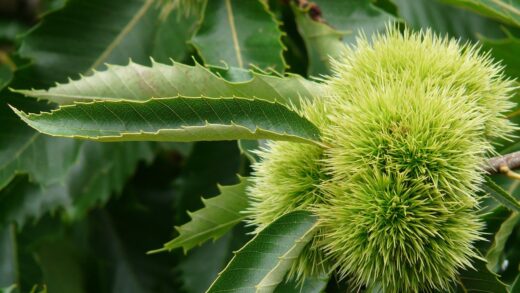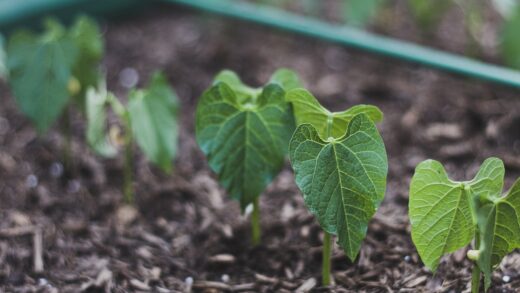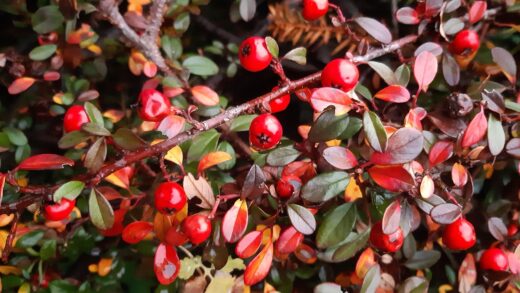A strategic approach to pruning and cutting back the Madagascar periwinkle is a vital horticultural practice that significantly enhances its aesthetic appeal and overall performance. While these plants can grow and flower reasonably well without any intervention, periodic trimming and pinching will result in a healthier, more robust, and far more floriferous specimen. Pruning is not about harming the plant; rather, it is a way of guiding its growth to achieve a desired outcome. For the Madagascar periwinkle, the primary goals of pruning are to encourage a compact, bushy habit, prevent legginess, and stimulate the continuous production of blooms throughout the entire growing season. Understanding the right techniques and timing is key to unlocking the plant’s full potential.
Many gardeners, especially those new to the species, may feel hesitant to cut back a plant that is actively growing. However, it is important to understand that the Madagascar periwinkle responds very positively to being pruned. Each time a growing tip is removed, the plant is stimulated to produce two or more new branches from the nodes just below the cut. This exponential branching is what transforms a plant with a few single stems into a dense, mounded specimen that is capable of supporting a much greater number of flowers. This simple action is one of the most effective ways to maximize the floral display.
The practice of pruning this plant can be broken down into several distinct techniques, each with a specific purpose and performed at different stages of the plant’s life. “Pinching” is a light form of pruning done early in the season on young plants to establish a strong, bushy framework. “Deadheading” is the ongoing removal of spent flowers to redirect energy into new bloom production. “Cutting back” or “rejuvenation pruning” is a more significant trim that is performed mid-season if a plant has become leggy or overgrown.
By incorporating these simple pruning tasks into your regular maintenance routine, you can exert a significant amount of control over the plant’s shape and flowering capacity. It is a proactive measure that prevents many of the common aesthetic issues, such as sparse growth and reduced blooming, that can affect the plant later in the season. A small investment of time in regular trimming will pay large dividends in the form of a beautiful, well-formed plant that remains a highlight of the garden from spring until frost.
Pinching young plants for bushiness
The practice of “pinching” is arguably the most important pruning technique for establishing a well-structured Madagascar periwinkle. This process should begin when the plants are still young, typically when they are about 10 to 15 centimetres tall. Pinching simply involves using your thumb and forefinger, or a small pair of snips, to remove the very tip of each main stem, including the top set of leaves. This removal of the apical meristem—the primary growing point—breaks its hormonal dominance over the rest of the stem.
More articles on this topic
Once the main growing tip is removed, the plant’s growth hormones are redirected to the dormant lateral buds located at the nodes further down the stem. This stimulation causes these side buds to break dormancy and grow into new branches. As a result, instead of a single, tall stem, you will now have two or more stems growing from that point. This is the fundamental mechanism by which pinching creates a bushier, multi-stemmed plant from a very early stage.
This initial pinching can be repeated on the new side shoots once they have grown a few inches and developed several sets of leaves. By pinching back these new branches as well, you continue to multiply the number of growing tips, further enhancing the density of the plant. While this early-season pinching may slightly delay the appearance of the very first flowers, the resulting well-branched framework will ultimately support a far greater number of blooms simultaneously, leading to a much more spectacular display throughout the rest of the season.
This technique is especially crucial for plants grown from seed or for any young seedlings that have a naturally upright, single-stemmed growth habit. Many modern cultivars have been bred for better natural branching, but even these varieties will benefit from at least one good pinch early in their development. It is a simple, quick procedure that lays the foundation for a season of dense growth and prolific flowering.
Deadheading for continuous blooms
Deadheading is the horticultural term for the removal of faded or spent flowers from a plant. For the Madagascar periwinkle, this is an ongoing maintenance task that provides significant benefits. The primary purpose of a flower is to produce seeds to ensure the plant’s reproduction. Once a flower is pollinated and begins to fade, the plant diverts a substantial amount of its energy into developing the resulting seed pod. By removing the old flower before it has a chance to set seed, you effectively trick the plant into thinking its reproductive mission has not yet been accomplished.
More articles on this topic
This interruption of the seed production cycle redirects the plant’s energy away from making seeds and back into producing more flowers. The result is a plant that blooms more profusely and for a much longer period. While many modern varieties of Madagascar periwinkle are described as “self-cleaning,” meaning they tend to drop their old blossoms without forming prominent seed pods, manually deadheading will almost always improve the performance and appearance of the plant.
The process of deadheading is simple. Regularly inspect your plants and locate any flowers that are wilted, faded, or have dropped their petals. Using your fingers or small scissors, pinch or snip off the entire old flower head, including the small stem that attaches it to the main branch. Taking a moment to do this every few days while you are watering or observing your plants is all it takes to keep them looking tidy and performing at their peak.
In addition to encouraging more blooms, deadheading also improves the overall appearance and health of the plant. A plant cluttered with brown, decaying flowers is not as attractive as one displaying only fresh, vibrant blossoms. Furthermore, these decaying flower petals can sometimes become a site for fungal diseases like botrytis to take hold, especially in damp weather. Promptly removing them as part of a regular deadheading routine contributes to better garden sanitation and plant health.
Cutting back leggy plants mid-season
Despite your best efforts with early-season pinching, there may come a time, often in the middle of summer, when a Madagascar periwinkle plant starts to look overgrown, sparse, or “leggy.” This can be caused by a variety of factors, including extremely hot weather, inconsistent watering, or simply the plant’s natural growth habit over time. The plant may have long, trailing stems with foliage and flowers concentrated only at the ends, leaving the centre of the plant looking bare and woody. When this happens, a more substantial pruning, often called a rejuvenation trim, is in order.
Do not be afraid to give the plant a significant haircut. Using clean, sharp pruning shears, cut back all of the stems by about one-third to one-half of their length. Try to make your cuts just above a leaf node, as this is where the new growth will emerge. This seemingly drastic action will remove the existing flowers and leggy stems, but the plant will respond by pushing out a fresh flush of new, bushy growth from the lower parts of the stems.
After cutting the plant back, it is a good time to provide it with a dose of a balanced, water-soluble fertilizer. This will give the plant the nutrients it needs to quickly recover and fuel the development of its new growth. Ensure that the plant is well-watered after this pruning and feeding. Within a week or two, you should begin to see new leaves and shoots emerging all over the plant.
This mid-season shearing will result in a brief period of a few weeks where the plant is not in bloom. However, the reward for this temporary pause is a plant that is rejuvenated, compact, and ready to burst forth with a spectacular new wave of flowers that will carry it through the remainder of the growing season. This technique is an excellent way to refresh tired-looking plants in containers, hanging baskets, and garden beds, ensuring they look their best right up until the first frost.
Tools and best practices
While much of the light pruning on Madagascar periwinkle, such as pinching and deadheading, can be done with your fingertips, using the right tools for more substantial cutting back will ensure clean cuts and a healthy plant. A sharp, clean pair of bypass pruners or floral snips is ideal. Bypass pruners have two curved blades that pass by each other like scissors, making a clean cut that does not crush the plant’s stem. Avoid using anvil-style pruners, which have a single blade that closes against a flat surface, as they are more likely to damage the delicate stem tissue.
Before you begin any pruning task, it is crucial to make sure your tools are clean and sanitized. Pruning tools can easily transfer fungal, bacterial, and viral diseases from one plant to another. To sanitize your pruners, you can wipe the blades with a cloth soaked in a solution of 70% isopropyl alcohol or a 10% bleach solution (one part bleach to nine parts water). Cleaning your tools before you start and between plants is one of the most important habits of good garden hygiene.
When making a pruning cut, always aim to cut about 0.5 centimetres above a leaf or a node (the point where a leaf is or was attached to the stem). The new growth will emerge from the bud located at that node. Cutting too far above a node will leave a small stub of stem that will die back and can become an entry point for disease. Conversely, cutting too close to the node can damage the bud itself. A clean, angled cut just above a node is the professional standard.
After any significant pruning session, it is good practice to clean up all the clippings and debris from around the base of the plant and dispose of them properly. Do not leave the pruned material on the soil surface, as it can harbour pests or diseases as it decomposes. A tidy garden is a healthy garden. Following these best practices for tools and technique will ensure that your pruning efforts are successful and contribute positively to the health and beauty of your Madagascar periwinkle.


















